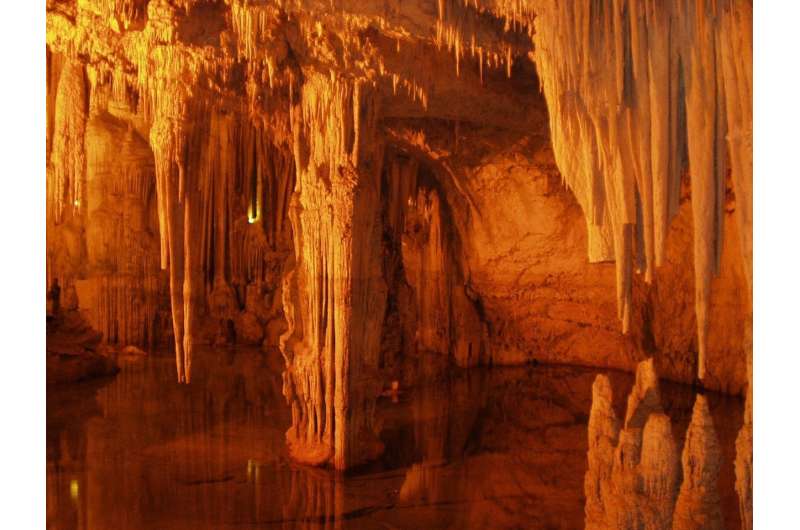December 14, 2018 report
Two stalagmites found in Chinese cave offer a way to improve accuracy of carbon-14 dating

A team of researchers with members affiliated with several institutions in the U.S. and China has found two stalagmites that offer a way to improve the accuracy of the carbon-14 dating technique. In their paper published in the journal Science, the group describes the stalagmites and their study of them.
The carbon-14 dating technique has been the go-to dating technique for archaeologist since the 1950s—in recent years, it has become an important tool for use in measuring climate change, as well. But the technique has always suffered from one fatal flaw—its accuracy depends on a strong record of atmospheric carbon ratios (carbon-12 to carbon-14) for the time period involved. For recent years, this has not been a problem, of course. But the technique is less precise for dating older objects. Scientists have used tree rings (both preserved and fossilized) and coral reefs as a way to measure ratios in given time periods, but such techniques begin to suffer going back tens of thousands of years. In this new effort, the researchers report on the finding of two stalagmites in a Chinese cave that offer an accurate measure of such ratios going back approximately 54,000 years. The half-life of carbon-14 is 5,370 years.
Stalagmites are columns formed by mineral-bearing water dripping on the floors of caves over thousands of years—as a drop evaporates, it leaves behind a residual minerals—over time, they grow, forming tall columns. The stalagmites in China were found in Hulu Cave and they offer a continuous record of atmospheric carbon ratios.
To retrieve the carbon ratio data, the researchers used an isotopic dating technique called thorium-230 dating. They used it on hundreds of very thin layers in the stalagmites—each offered a ratio for a given time in history. The results represent what they describe as an unprecedented baseline, offering a means for improving the accuracy of a valuable dating tool. In the future, archaeologists will be able to provide more accurate estimates for organic objects that are newly excavated, as well as for those that have already been found.
More information: Hai Cheng et al. Atmospheric 14C/12C changes during the last glacial period from Hulu Cave, Science (2018). DOI: 10.1126/science.aau0747
Journal information: Science
© 2018 Science X Network




















